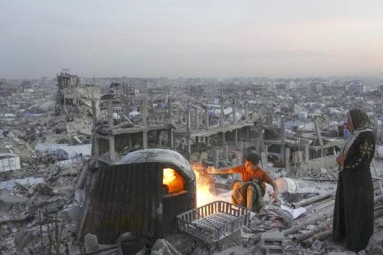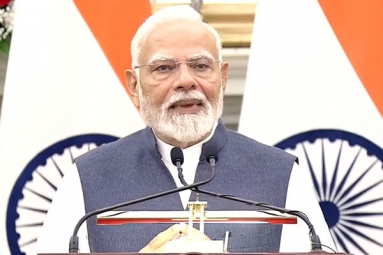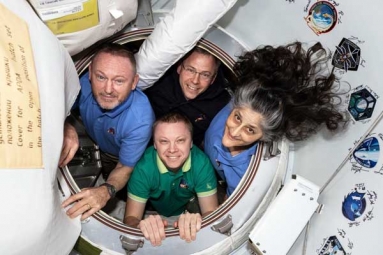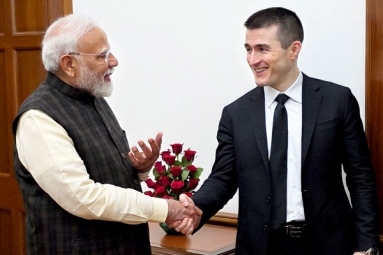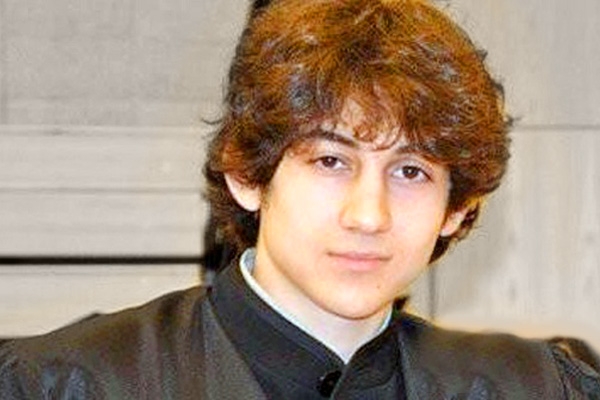
(Image source from: Tsarnaev guilty on all counts in Marathon bombings})
Dzhokhar Tsarnaev, the Cambridge high school graduate who fashioned himself into an Islamic warrior against America, was convicted Wednesday in a sweeping verdict that held him responsible for the terrorist attacks that killed three people and injured more than 260 nearly two years ago at the Boston Marathon finish line.
Tsarnaev, now 21, showed no emotion as the court clerk took more than 20 minutes to read the guilty verdict on each of the 30 charges he faced. The charges included the fatal shooting of MIT Police Officer Sean Collier, the carjacking and robbery of a businessman, and a firefight with police in Watertown that left an MBTA police officer gravely injured.
The jury of seven women and five men deliberated for just over 11 hours before reaching its verdict.
The guilty findings were largely expected after Tsarnaev’s lawyers admitted his complicity in the bombings in opening statements, but it was a highly charged moment for the bombing’s survivors and for a city shaken by the events of April 15, 2013.
Before the jury entered, a court officer had warned those in the courtroom to control their emotions.
So the courtroom went silent as the verdicts were read, save for the shuffling of paper. Tsarnaev fidgeted at times, folding his hands in front of him, crossing his arms, touching his face. Jurors were stonefaced as the clerk read their verdict.
The same jury that convicted Tsarnaev will now consider in a separate phase of the trial whether he should be sentenced to death. The jury could begin hearing that case as soon as Monday.
By the time the judge excused the jury Wednesday, the lanky defendant darted away from the defense table faster than usual, seemingly eager to leave the courtroom where he had just been convicted of heinous crimes that could lead the jury to sentence him to death.
Wednesday’s verdict was welcomed by some of the bombing survivors, many of whom have made their way to the courthousethroughout the trial, some on prosthetic legs. The families of Tsarnaev’s victims also attended.
“We are thankful that Dzhokhar Tsarnaev will be held accountable for the evil that he brought to so many families,” said a statement from the family of Collier. “The strength and bond that everyone has shown during these last two years proves that if these terrorists thought they would somehow strike fear in the hearts of people, they monumentally failed,” the statement said.
Hundreds of people were injured in the Marathon blasts, including 17 who lost limbs.
The three who were killed were Krystle Marie Campbell, 29, who grew up in Medford and was a well-known restaurant and event caterer; Lingzi Lu, a 23-year-old Boston University graduate student from China; and Martin Richard, an 8-year-old Dorchester boy whose family made the Marathon an annual family outing.
William Richard, Martin’s father, gave emotional testimony during the trial, describing how he made the difficult decision to help his gravely injured daughter while his wife, Denise, tended to their dying son. Both parents sat in the second row of the courtroom Wednesday as the verdict was read. William Richard later put his hand on the shoulder of one of the prosecutors in a quiet sign of thanks.
Boston Police Commissioner William Evans, who ran the 2013 Marathon and then returned to help direct the response, was sitting in the second row roughly 15 feet behind Tsarnaev when the verdicts were read.
“I couldn’t help but think about all the evil he has committed, all the lives he destroyed forever, and how someone could be so destructive,” Evans later said in an interview.
He said he hoped the verdicts would allow Tsarnaev’s victims and the survivors of the attacks to get “some sense of satisfaction, some sense of closure coming from knowing the person that committed such a malicious act was held accountable.”
Seven hours into deliberations, the jury sent the judge two notes. They wanted to know the definition of aiding and abetting, which the judge explained is a defendant’s action to intentionally help another person commit a criminal offense.
The jurors also asked about the criminal conspiracy — wanting to know how long the charged conspiracy lasted. The judge told them they would have to decide.
Ultimately, they found him guilty of each count, and each question that cited the murders and injuries of the victims — enhancements that allow for the death penalty.
At the start of the trial the defense acknowledged their client’s guilt but — in an effort to save his life — used the trial to place the blame on Tsarnaev’s older brother and accomplice, Tamerlan, who they say was the mastermind of the attacks. Their client, they argued, was emotionally vulnerable and lured into this terrorist scheme — and thus he should be spared the death penalty, the ultimate punishment. Defense lawyers are expected to expand on that argument in the second phase of the trial.
Throughout the trial, which included 95 witnesses over 16 days of testimony, prosecutors sought to portray the brothers as equal partners who marched down Boylston Street and into a crowd of people just before 3 p.m. on Marathon day. Tamerlan Tsarnaev stopped in front of Marathon Sports, where he set off the bomb that killed Campell. Dzhokhar Tsarnaev stopped outside the Forum restaurant, where he placed a bomb behind where the Richard family was watching the race. Lu was walking by when it exploded.
Then, authorities say, the brothers just left.
Less than a half hour later, Tsarnaev bought milk at a Whole Foods in Cambridge. The next day he exercised at a gym at the University of Massachusetts Dartmouth where he was a student.
After the Marathon bombings, he tweeted, “Ain’t no love in the heart of the city. Stay safe, people.” He later wrote, “I’m a stress-free kind of guy.”
The case took a significant turn three days after the bombings, when the FBI released a photo of the brothers in an attempt to identify them. That is when they shot and killed Collier and tried to steal his gun, then carjacked a young entrepreneur driving a Mercedes.
Prosecutors say the brothers intended to drive to New York City, armed with more bombs to carry out more attacks.
That plot ended when officials tracked the stolen Mercedes to Watertown, and a firefight ensued.
The brothers threw four pipe bombs at responding officers — only two of those bombs exploded — and Dzhokhar Tsarnaev threw a pressure cooker bomb that shook the neighborhood. Tamerlan Tsarnaev shot at officers. When the gun jammed, he ran at officers and they subdued him.
That is when, according to testimony in the trial, his younger brother drove at the officers and Tamerlan Tsarnaev, dragging him roughly 30 feet. Dzhokhar Tsarnaev was found roughly 17 hours later, hiding in a parked boat a few blocks away.
Defense attorney Judy Clarke asked jurors in her closing arguments Monday to keep an open mind during the sentencing phase of the trial, when she will be allowed to elaborate on Tamerlan Tsarnaev’s influence on a vulnerable teenager, and to be open “to what more there is to learn, and to what more there is to understand.”
During the next phase, which is also expected to last about a month, prosecutors are expected to call victims who could testify about how their lives have been irrevocably changed, to show that Tsarnaev’s crimes were so heinous he deserves the death penalty.
US Attorney Carmen M. Ortiz looked ahead after the verdicts were read.
“As we enter this next [sentencing] phase,” she said in a statement, “we are focused on the work that remains to be done.”
- Manohar. M







